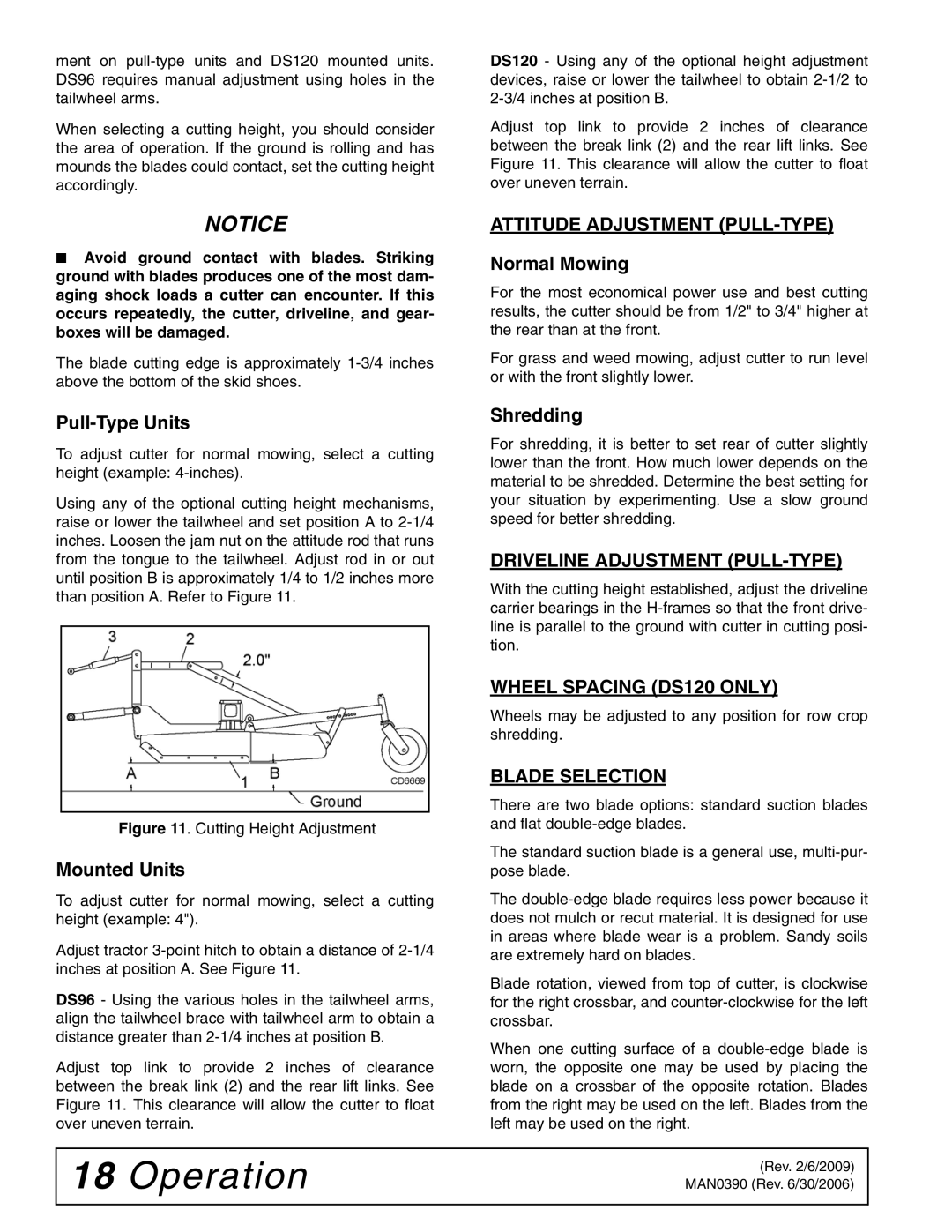
ment on
When selecting a cutting height, you should consider the area of operation. If the ground is rolling and has mounds the blades could contact, set the cutting height accordingly.
NOTICE
■Avoid ground contact with blades. Striking ground with blades produces one of the most dam- aging shock loads a cutter can encounter. If this occurs repeatedly, the cutter, driveline, and gear- boxes will be damaged.
The blade cutting edge is approximately
Pull-Type Units
To adjust cutter for normal mowing, select a cutting height (example:
Using any of the optional cutting height mechanisms, raise or lower the tailwheel and set position A to
Figure 11. Cutting Height Adjustment
Mounted Units
To adjust cutter for normal mowing, select a cutting height (example: 4").
Adjust tractor
DS96 - Using the various holes in the tailwheel arms, align the tailwheel brace with tailwheel arm to obtain a distance greater than
Adjust top link to provide 2 inches of clearance between the break link (2) and the rear lift links. See Figure 11. This clearance will allow the cutter to float over uneven terrain.
DS120 - Using any of the optional height adjustment devices, raise or lower the tailwheel to obtain
Adjust top link to provide 2 inches of clearance between the break link (2) and the rear lift links. See Figure 11. This clearance will allow the cutter to float over uneven terrain.
ATTITUDE ADJUSTMENT (PULL-TYPE)
Normal Mowing
For the most economical power use and best cutting results, the cutter should be from 1/2" to 3/4" higher at the rear than at the front.
For grass and weed mowing, adjust cutter to run level or with the front slightly lower.
Shredding
For shredding, it is better to set rear of cutter slightly lower than the front. How much lower depends on the material to be shredded. Determine the best setting for your situation by experimenting. Use a slow ground speed for better shredding.
DRIVELINE ADJUSTMENT (PULL-TYPE)
With the cutting height established, adjust the driveline carrier bearings in the
WHEEL SPACING (DS120 ONLY)
Wheels may be adjusted to any position for row crop shredding.
BLADE SELECTION
There are two blade options: standard suction blades and flat
The standard suction blade is a general use,
The
Blade rotation, viewed from top of cutter, is clockwise for the right crossbar, and
When one cutting surface of a
18Operation
(Rev. 2/6/2009) MAN0390 (Rev. 6/30/2006)
